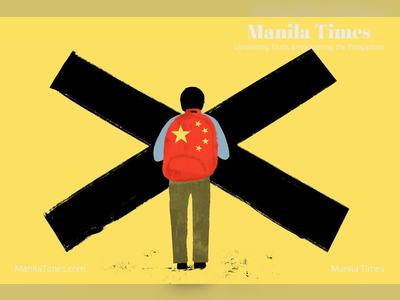Manila Times
Upholding Truth. Empowering the Philippines
Wednesday, Jul 30, 2025
The Nation's Story is Told with Honor
Philippine Media Landscape Faces Transformation Amidst Regulatory Changes
New laws and technological advancements reshape, challenge traditional broadcasting norms.
The media and entertainment sector in the Philippines is experiencing significant transformations brought about by evolving regulatory frameworks and advances in technology.
Recently, the Philippine government has introduced legislative measures aimed at modernizing the media landscape, addressing issues such as foreign ownership limits and content regulation.
The Broadcast Media Council has been at the forefront of discussions regarding the implementation of the proposed Media Industry Law, which seeks to enhance the competitiveness of local media companies while ensuring the protection of Filipino cultural values.
Digital platforms have also witnessed substantial growth, with streaming services increasingly popular among consumers.
This shift has prompted traditional broadcasters to adapt their strategies to retain viewership and relevance in a rapidly changing media environment.
In response, major networks are investing heavily in digital content and innovative delivery methods to reach audiences who now favor on-demand viewing options.
Moreover, the challenges presented by the COVID-19 pandemic have accelerated the shift towards digital platforms, compelling broadcasters to pivot their operations.
In 2022, a survey indicated that over 70% of Filipinos consumed media through online platforms, reflecting a significant transition from traditional television and radio.
Alongside these changes, the industry faces ongoing scrutiny regarding press freedom and regulatory compliance.
The prior shutdown of significant media outlets in recent years raised alarms among advocates for free speech, prompting calls for more robust protections for journalists and media organizations in the Philippines.
Furthermore, international collaborations are becoming more prominent as Philippine media players seek to expand their reach and content portfolio.
Partnerships with global networks have enabled local companies to access broader distribution channels and content-sharing opportunities, which may play a pivotal role in the future of the country's entertainment industry.
As the industry evolves, stakeholders, including investors and consumers, are closely watching developments that could alter the landscape of media in the Philippines for years to come.
Recently, the Philippine government has introduced legislative measures aimed at modernizing the media landscape, addressing issues such as foreign ownership limits and content regulation.
The Broadcast Media Council has been at the forefront of discussions regarding the implementation of the proposed Media Industry Law, which seeks to enhance the competitiveness of local media companies while ensuring the protection of Filipino cultural values.
Digital platforms have also witnessed substantial growth, with streaming services increasingly popular among consumers.
This shift has prompted traditional broadcasters to adapt their strategies to retain viewership and relevance in a rapidly changing media environment.
In response, major networks are investing heavily in digital content and innovative delivery methods to reach audiences who now favor on-demand viewing options.
Moreover, the challenges presented by the COVID-19 pandemic have accelerated the shift towards digital platforms, compelling broadcasters to pivot their operations.
In 2022, a survey indicated that over 70% of Filipinos consumed media through online platforms, reflecting a significant transition from traditional television and radio.
Alongside these changes, the industry faces ongoing scrutiny regarding press freedom and regulatory compliance.
The prior shutdown of significant media outlets in recent years raised alarms among advocates for free speech, prompting calls for more robust protections for journalists and media organizations in the Philippines.
Furthermore, international collaborations are becoming more prominent as Philippine media players seek to expand their reach and content portfolio.
Partnerships with global networks have enabled local companies to access broader distribution channels and content-sharing opportunities, which may play a pivotal role in the future of the country's entertainment industry.
As the industry evolves, stakeholders, including investors and consumers, are closely watching developments that could alter the landscape of media in the Philippines for years to come.
AI Disclaimer: An advanced artificial intelligence (AI) system generated the content of this page on its own. This innovative technology conducts extensive research from a variety of reliable sources, performs rigorous fact-checking and verification, cleans up and balances biased or manipulated content, and presents a minimal factual summary that is just enough yet essential for you to function as an informed and educated citizen. Please keep in mind, however, that this system is an evolving technology, and as a result, the article may contain accidental inaccuracies or errors. We urge you to help us improve our site by reporting any inaccuracies you find using the "Contact Us" link at the bottom of this page. Your helpful feedback helps us improve our system and deliver more precise content. When you find an article of interest here, please look for the full and extensive coverage of this topic in traditional news sources, as they are written by professional journalists that we try to support, not replace. We appreciate your understanding and assistance.











